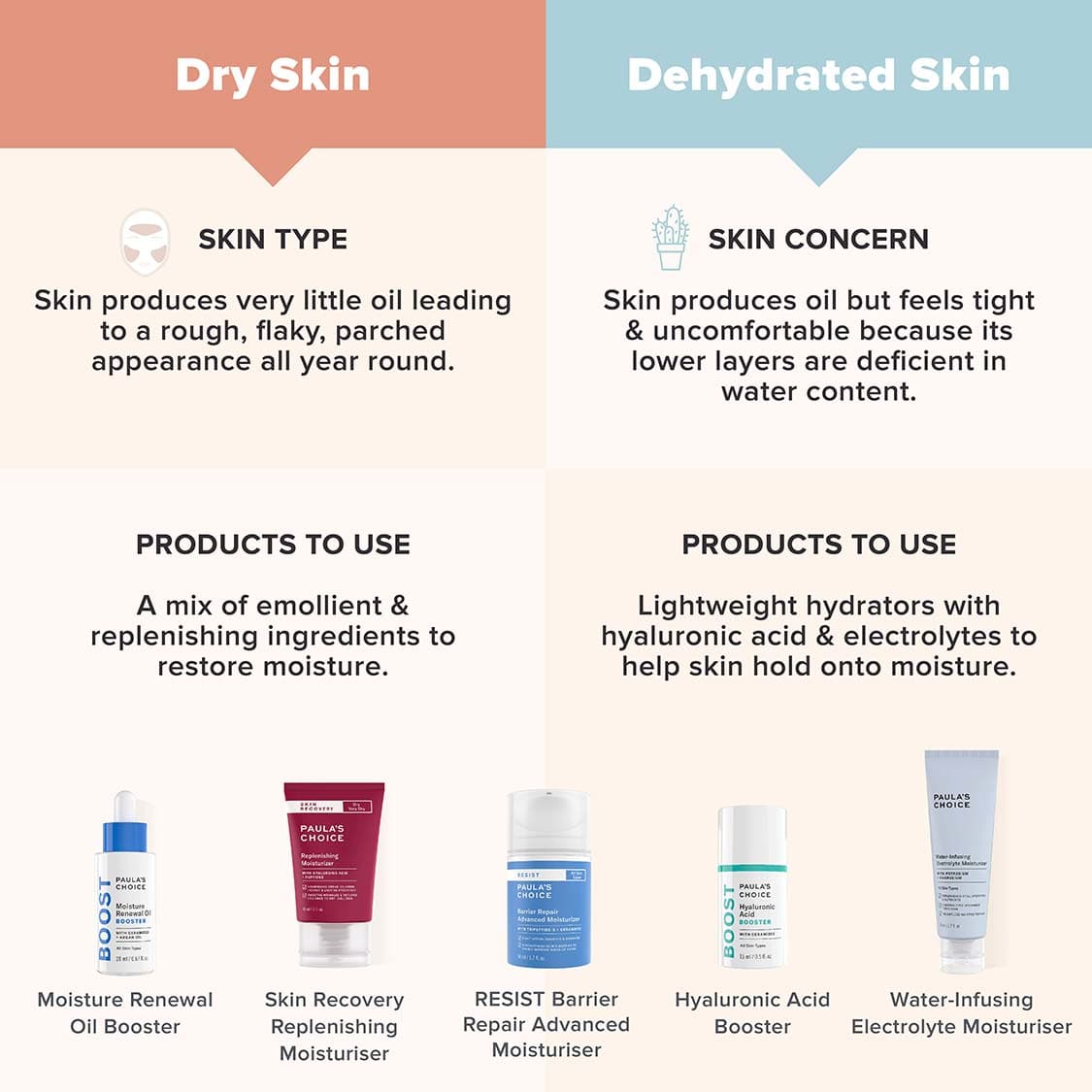Do you struggle with an oily T-zone but dry, flaky cheeks? You’re not alone—and it can feel confusing to manage two very different skin types on one face.
When your forehead and nose shine with excess oil while your cheeks feel tight and parched, it’s easy to end up using products that make one area worse while trying to fix the other. But what if you could balance your skin, calm the shine, and soothe dryness all at once?
Keep reading to discover simple, effective steps tailored just for your unique skin. Say goodbye to the oily-dry tug of war and hello to a smoother, healthier complexion.

Credit: www.healthline.com
Skin Type Causes
Understanding why your skin feels oily in the T zone but dry on the cheeks helps you care better. The skin on different face parts behaves differently due to how oil and moisture balance work. This uneven skin type is common and needs special attention.
Oil Production In T Zone
The T zone covers the forehead, nose, and chin areas. These parts have many oil glands that produce sebum. Sebum keeps skin soft but too much makes the area shiny and oily. The T zone often gets oily faster because of these active glands. Heat, hormones, and stress can increase oil production here.
Why Cheeks Stay Dry
Cheeks have fewer oil glands than the T zone. This makes them less oily and more prone to dryness. The skin on cheeks can lose moisture quickly, especially in cold or dry weather. Using harsh soaps or not moisturizing enough can make cheeks feel tight and flaky. Dry cheeks need gentle care to stay hydrated and healthy.

Credit: www.healthline.com
Gentle Cleansing
Gentle cleansing is key for balancing oily T zones and dry cheeks. It removes dirt and oil without harming delicate skin. Using the right cleanser and washing method helps keep skin comfortable and healthy.
Strong cleansers can dry cheeks and make the oily areas produce more oil. Gentle cleansing supports natural moisture and controls shine. It prepares your skin for better absorption of moisturizers and treatments.
Choosing Mild Cleansers
Select cleansers that are mild and free from harsh chemicals. Look for products labeled “non-comedogenic” and “alcohol-free.” Cream or gel cleansers work well for combination skin types.
Avoid cleansers with strong fragrances or sulfates. These can irritate dry cheeks and worsen oiliness in the T zone. Ingredients like glycerin or hyaluronic acid help keep skin hydrated while cleansing.
Best Washing Practices
Wash your face twice daily with lukewarm water. Hot water strips natural oils, causing dryness and excess oil production. Use gentle, circular motions to clean your skin without rubbing hard.
Pat your face dry with a soft towel instead of rubbing. Overwashing or scrubbing can cause irritation and imbalance. Finish by applying moisturizer to lock in hydration and soothe dry areas.
Targeted Moisturizing
Targeted moisturizing helps balance skin that feels oily in some places and dry in others. It means using different products on different parts of the face. This approach keeps oily areas light and fresh while giving dry cheeks the moisture they need. This way, skin stays comfortable and healthy all day.
Lightweight Hydrators For Oily Areas
Use lightweight moisturizers on the oily T-zone. These products absorb quickly and do not clog pores. Look for ingredients like hyaluronic acid and glycerin that add moisture without oil. Gel-based or water-based formulas work best. They keep skin hydrated and reduce shine. Avoid heavy creams that can cause breakouts in oily zones.
Rich Moisturizers For Dry Cheeks
Dry cheeks need richer creams to restore moisture. Choose products with ingredients like ceramides, shea butter, or squalane. These help repair and protect the skin barrier. Apply generously to dry areas for lasting hydration. Rich moisturizers soothe tight, flaky skin and prevent irritation. Use them only on dry patches to avoid excess oiliness elsewhere.
Balancing Treatments
Balancing oily skin on the T-zone while keeping cheeks hydrated needs careful care. The goal is to reduce oil on the forehead and nose without drying out the cheeks. Using treatments that control oil and add moisture helps create balance. Gentle products keep skin healthy and comfortable.
Choosing the right treatments targets each area’s needs without causing irritation. Clay masks and salicylic acid serums are great options. They help control shine and clear pores while supporting dry skin areas.
Clay Masks For Oil Control
Clay masks absorb excess oil from the T-zone effectively. They pull out dirt and unclog pores gently. Use a clay mask once or twice a week to reduce shine and freshen skin. Avoid leaving the mask on too long to prevent drying out the cheeks. Look for masks with kaolin or bentonite clay. These types are mild and suitable for sensitive skin. After rinsing, apply a light moisturizer to keep dry cheeks soft.
Serums With Salicylic Acid
Salicylic acid serums help exfoliate and clear pores on oily skin. They reduce blackheads and prevent new breakouts. Use a serum with low salicylic acid concentration to avoid irritation. Apply it mainly on the T-zone, skipping dry cheek areas. This targeted approach controls oil without harming dry skin. Combine the serum with a hydrating moisturizer to maintain moisture balance. Regular use improves skin texture and reduces oiliness over time.
Sun Protection
Sun protection is essential for all skin types, especially for those with an oily T-zone and dry cheeks. The sun’s rays can worsen dryness and increase oil production, leading to skin imbalance. Proper protection keeps the skin healthy and prevents damage like redness, peeling, and premature aging.
Choosing the right sunscreen helps maintain moisture in dry areas while controlling shine in oily zones. It also shields the skin from harmful UV rays that cause long-term harm.
Non-comedogenic Sunscreens
Non-comedogenic sunscreens do not clog pores. They are perfect for oily skin prone to breakouts. These sunscreens feel light and absorb quickly without leaving a greasy layer. Many contain moisturizing ingredients that help dry cheeks stay hydrated.
Look for formulas labeled “oil-free” or “matte finish.” Ingredients like zinc oxide or titanium dioxide provide gentle sun protection and reduce irritation. Avoid heavy creams and thick lotions that can block pores or worsen oiliness.
Daily Application Tips
Apply sunscreen every morning, even on cloudy days. Use about a nickel-sized amount for your face. Spread it evenly over all areas, including dry cheeks and the oily T-zone. Don’t forget the neck and ears.
Reapply sunscreen every two hours if you stay outdoors. Use a gentle cleanser to remove sunscreen fully at night. Follow with a lightweight moisturizer to keep your skin balanced and comfortable.
Lifestyle Adjustments
Managing an oily T zone with dry cheeks needs more than just skincare products. Simple lifestyle changes play a big role. These changes help balance skin’s oil and moisture naturally. Making small adjustments supports healthier skin over time.
Focus on habits that improve skin health inside and outside. Drinking enough water and choosing the right foods can make a clear difference. Creating a gentle environment for your skin also helps reduce dryness and oiliness.
Hydration And Diet
Water is key for balanced skin. Drinking at least eight glasses daily keeps skin hydrated from within. Hydrated skin reduces dryness and controls excess oil production.
Eat foods rich in vitamins and minerals. Fresh fruits, vegetables, and nuts supply nutrients to support skin health. Avoid too much sugar and fried foods. These can increase oil production and cause breakouts.
Omega-3 fatty acids found in fish and flaxseeds calm inflammation. This can reduce skin redness and dryness. Proper hydration and diet nourish your skin for a smoother look.
Using Humidifiers And Avoiding Over-washing
Dry indoor air can worsen dry cheeks. Using a humidifier adds moisture to the air. This helps keep skin soft and less flaky. It is especially helpful during winter or in dry climates.
Washing your face too often strips natural oils. This causes the skin to produce more oil in the T zone. Cleanse gently twice a day with a mild cleanser. Avoid harsh scrubs or hot water. These can dry out your cheeks and irritate skin.
Pat your face dry with a soft towel instead of rubbing. Over-washing and harsh drying harm skin balance. Maintain a gentle routine to protect both oily and dry areas.

Credit: www.paulaschoice-eu.com
Frequently Asked Questions
How To Deal With Oily T-zone And Dry Cheeks?
Use a gentle, alcohol-free cleanser twice daily. Apply a lightweight, non-comedogenic moisturizer with hyaluronic acid. Use clay masks weekly on the T-zone. Apply oil-free sunscreen daily. Hydrate by drinking water and consider a humidifier for dry cheeks.
Why Are My Cheeks Dry But My Forehead Is Oily?
Your forehead has more oil glands, causing oiliness, while cheeks produce less oil, leading to dryness. This uneven oil distribution creates dry cheeks and an oily forehead.
How To Fix Dry Skin On Cheeks?
Gently cleanse cheeks twice daily with a mild, alcohol-free cleanser. Apply a lightweight moisturizer containing hyaluronic acid. Use warm water, avoid long baths, and consider a humidifier. Protect skin with non-comedogenic sunscreen. Drink plenty of water to maintain hydration. Choose gentle fabrics to prevent irritation.
How To Fix Oily But Dry Skin?
Use a gentle, alcohol-free cleanser twice daily. Apply a lightweight, non-comedogenic moisturizer with hyaluronic acid. Use clay masks weekly and treat oily areas with salicylic acid or niacinamide. Protect skin with oil-free sunscreen. Drink water and consider a humidifier in dry climates.
Conclusion
Balancing an oily T-zone with dry cheeks takes gentle care and patience. Cleanse your face twice daily with a mild cleanser. Choose a lightweight moisturizer to hydrate dry areas without adding oil. Use targeted treatments like clay masks to control shine.
Drink plenty of water to keep skin healthy from inside. Avoid harsh products that strip moisture and worsen dryness. Consistency helps your skin feel comfortable and balanced every day. Small steps bring big improvements for mixed skin types. Keep it simple and listen to what your skin needs.
 Skip to content
Skip to content 